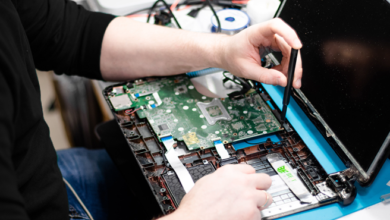The Role And Effect Of Salts In Dyeing Fabric

The purpose of this paper is to present the role and effect of salts in dyeing fabric. Cellulosic materials such as cotton, viscose, and hemp are negatively charged in aqueous media and thus repel the negatively charged anions of dyes during dyeing.

This repulsion is balanced by salts between the fiber and the dye in the dye bath. The salt acts as an adhesive to hold the dye molecules to the cloth, and a certain percentage of dye is added to the liquor to bind the dye to the cloth.
For this reason, salt is used as an extractant when dyeing cloth with various dyes (direct and reactive dyes). Inorganic salts such as Glauber’s salt, sodium chloride, zinc sulfate, aluminum sulfate, ammonium chloride, and copper sulfate are used as extractants. The dyeing efficiency of different salts is determined by the rate of color reduction, color intensity, and color durability.
Introduction
Reactive dyes are widely used for dyeing cotton because of their vivid hues, high strength, and excellent color fastness. Consumption of reactive dyes is expected to increase faster than many other cotton dyes. However, there are several limitations to their use. Dyeing of cotton with reactive dyes is done in an alkaline environment. The ionization of the hydroxyl groups of the cellulose in the dye solution creates a negative charge on the cotton. There is an extremely high electrostatic repulsion between cotton fibers and anionic reactive dyes, which can be reduced by adding electrolytes such as sodium chloride or sodium sulfate.
Depending on the depth of dyeing and dye composition, salt consumption ranges from 30 g/l to 150 g/l. Sufficient salt facilitates dye migration from the dye solution to the surface of the cotton fiber and increases dye absorption. Reactive fixation of the dye in cotton is based on the formation of covalent bonds at high pH (> 10.5) between dye molecules and hydroxyl groups of the cotton fiber. Furthermore, in alkaline baths, some of the dye molecules may react with OH-, resulting in poor dye fixation. Therefore, high salt input and low reactivity dye fixation are of interest to dye chemists. Highly colored wastewater with high chemical complexity in the dyeing process raises important environmental issues.
Once the three steps of adsorption, sorption, and desorption are completed, the fabric becomes saturated with dye molecules, and the entire process is called depletion. In the case of textiles, the dye is not completely dispersed, even in a dye bath. For this reason, salt is used as a bleaching agent for various dyes (direct and reactive dyes) in textile dyeing.
When cellulosic fibers such as cotton, viscose, and hemp are dyed, the surface of the fiber base material is covered with negative ions when immersed in the dye solution, but some dyes such as direct dyes and reactive dyes form a negative charge that acts as a zeta potential. As a result, the dye molecules react chemically with the fiber substrate and cannot peel off the adhesive from the fabric surface, affecting the substrate’s ability to change color. Salt acts as an adhesive that holds the dye molecules to the fabric, and the addition of alkali fixes a certain percentage of the dye to the fabric.
In jet dyeing, the Physico-chemical requirements for the use of salt and soda are the same for all or all technicians. In the case of maintenance dyes, salt is involved in the movement of the dye to the polysaccharide molecules and therefore soda ash (soda ash) is the reactive dye hydrolysis/fixing agent.
Reactive dyes are added to cotton in two stages, i.e. fixation and curing. Depletion is carried out with salt, preferably mannitol (Na2SO4) or sodium chloride (NaCl), to dissolve the negative zeta potential of the cotton and facilitate dye uptake. When the cotton fibres are immersed in water, their surface becomes anionic due to hydroxylation ions, so that the dye and the cellulose fibre particles appear to repel each other. The addition of salt creates a positively charged double layer that covers the negative charge on the cotton surface.
This helps the dye to move closer to the fibres, allowing H-bonds and other short-distance attractions between the dye and the fibre. Organic dye molecules have a higher affinity for the fabric than aqueous solutions. Due to the lower affinity of reactive dye fibres, the amount of salt required is higher than for directly adsorbed dyes. The amount of flow electrolyte can vary up to 100 g/l depending on the desired dye depth, dye structure or dye composition.
The dye is immobilized on the cotton fabric with alkaline substances such as sodium hydroxide (NaOH) and/or sodium carbonate (Na2CO3). The reactive dyes react with the hydroxyl groups of the cellulose, usually by nucleophilic substitution or fusion, and form covalent bonds under alkaline conditions.
It is hoped that these strong bonds will give the dyes excellent resistance to leaching. However, dyes can also react with hydroxyl groups in water so that they cannot react with cellulose. The amount of salt and base added depends on the depth of the shade to be created. In the case of reactive dyeing, the process is too long because thermal conditioning of the dye bath and the distribution of salt and base additives are necessary to avoid uneven dyeing and to optimise fatigue and fixation.
Salt can be a mineral consisting mainly of two components:
Metallic elements and chlorides a common salt is NaCl, which consists of metallic elements and chlorides formed by weathering. Ordinary salt crystals are available in solid form. Due to the ionic bond between the metallic element and the chloride ion, the salt is formed by small, tightly bound squares. In examples of the maintenance of crystalline structures, salt crystals are often used as an association to get to the heart of the matter; in the textile process, the basic concept of the word ‘salt’ should be taken into account.
In textile dyeing, a colourless crystalline solid sodium chloride is an inorganic compound of sodium and chloride salts, the ionic bonding of which keeps both components in a known white crystal soluble in water and plays an important role in maintaining electrolyte balance during textile dyeing. Mannitine is the generic name for sodium sulphate dehydrates Na2SO4.10H2O; it is formed when white or colourless monocrystalline crystals are commonly used for dyeing. Recrystallization of distilled brine produces evaporated salt. In vacuum crystallisation, the crude salt is dissolved in water to obtain a saturated solution and to identify impurities in the soil. The vacuum is created by means of a suitable vacuum pump.
All reactive dyes are composed of three basic units, in the simplest case a chromophore, a reactive group/reaction bridge partner (either a halogenated ring or an activated double bond)[13] . When applied to plastic fibres in an alkaline dye bath, these dyes will dye the bound plastic care fibres, where they form bonds with the hydroxyl groups of the fibres by reacting with their chemicals. The bonds formed between the dye molecules and the dye molecules in the fibres form the position of the fibre molecules.
In general, reactive dyes have little affinity; in water, reactive dyes are negatively charged and cellulose fibers are electronegative in water. Electrostatic repulsion between the cellulose fibers and the anionic dye can therefore prevent the cellulose fibers from being dyed by reactive dyes. Dye accelerators are currently widely used in reactive dyeing. Inorganic salts (anhydrous sodium sulfate and sodium chloride) are the most commonly used dye promoters.
The cautions in the inorganic salts adsorb on the surface of the cellulose fibers and weaken the negative charge of the cellulose fibers. Cellulose fibers can thus be dyed with reactive anionic dyes. However, since inorganic salts are also bound, the salt pollution of water bodies is significant.
Industrial salts are used in the textile industry to treat fibers and products made from cotton and other cellulosic materials. The salts used in dye baths allow the dye to fully penetrate the fabric, resulting in smooth and easy dyeing.
Types of salt
There are two types of industrial salt for dyeing:
- Vacuum salt
- Rock salt
both with a very high sodium chloride content and different particle sizes. The pure salt gives a better paint finish. Vacuum salt is generally preferred in the textile industry because of its high purity. Rock salt can also be used for dyeing because it is rich in sodium chloride.
Why is salt used in dyes?
Textile substrates and dye molecules can bond together unevenly. In such cases, some form of catalyst is needed to facilitate dyeing in the weaving machine. Salts play this important catalytic role. Salt has a very high affinity for water. Salt is needed in the textile dyeing process for three main reasons: first, to drive the dye into the fibers. Secondly, the use of salt contributes to the complete disappearance of the dye molecules in the fibers during the dyeing process. Thirdly, it is used as an electrolyte for the migration, adsorption and fixation of dyes in cellulosic materials.
In reactive dyeing, salts play an important role in increasing the affinity of the dye for the fibers, facilitating the interaction of the dye and reducing solubility. Therefore, Glauber salts, common salt, and vacuum salts are commonly used. Corrosion of the equipment can be caused by chloride ions in the common salt.
Therefore, Glauber salts are always preferable to common salt. The Glauber salt is sodium sulfate decahydrate, Na2SO4.10H2O, and is produced as white monoclinic or colorless crystals. In contact with slightly dry air, it evaporates to a powder of anhydrous sodium sulfate. Glauber’s salt was first developed by Johann Glauber (Spring of Hungary). Glauber’s salt is water soluble, has a salty, bitter taste, and is often used in medicines as a mild laxative. The common name for sodium chloride (NaCl) is vacuum salt.

The role of salt in jet dyeing
Inorganic salts play two important roles in the entire dyeing process with reagent dyes.
– They increase the affinity of the dye.
– They promote dye interaction and reduce solubility.
Reactive dyes consist of sulfonic acid groups (-SO3H), which are generally insoluble in water. These sulfonic acid groups are converted to water-soluble sodium sulfonate salts (-SO3Na) in the production of reactive dyes.


